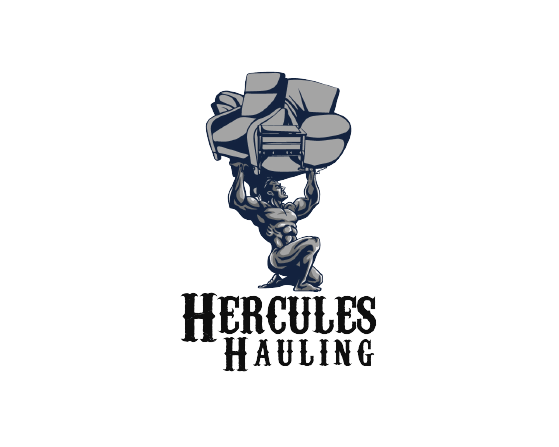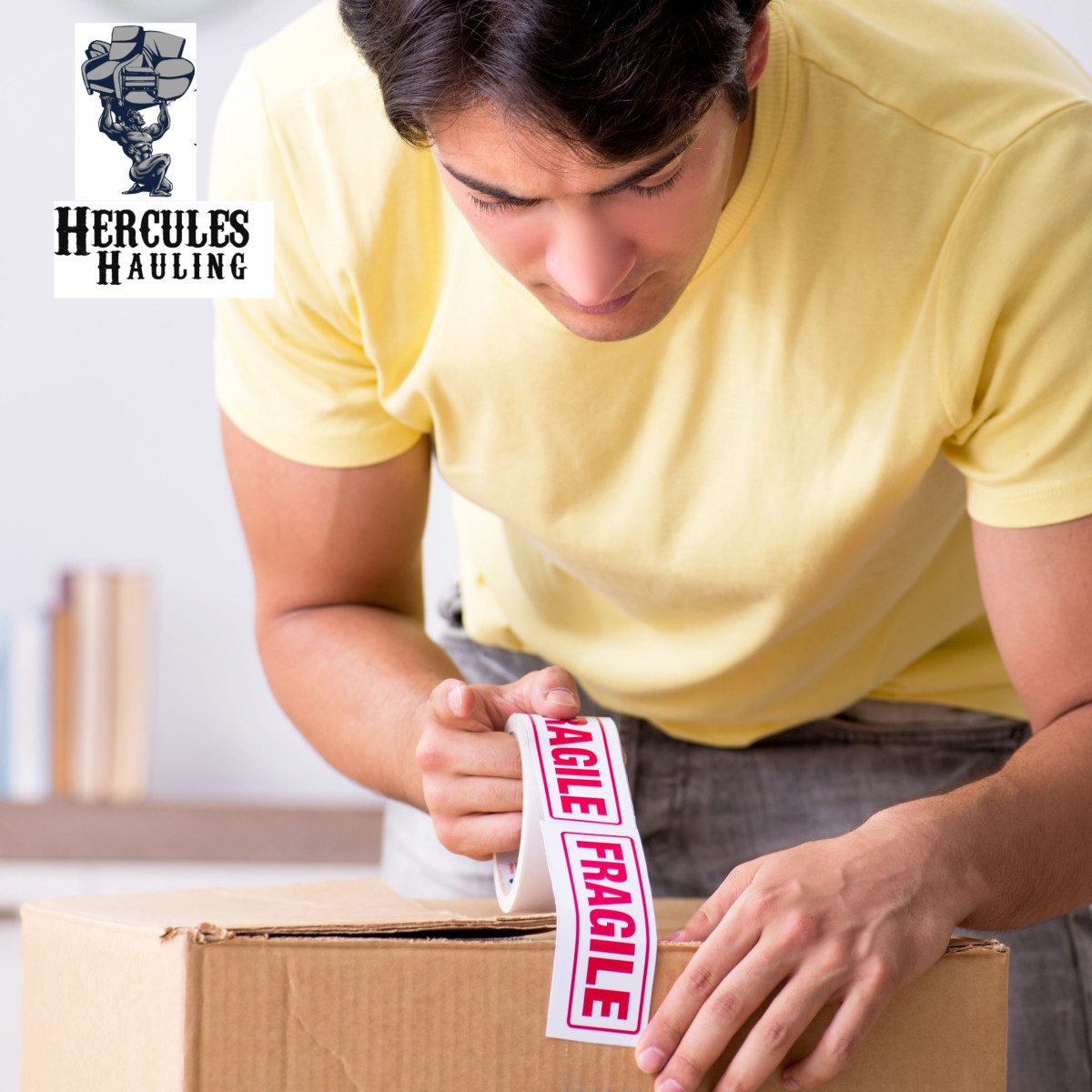Hercules Hauling Shares Tips on How to Pack Your Fragile Items for Your Move
Rockaway, United States - June 8, 2023 / Moving Service Marketing Company /
Moving to a new place can be exciting and stressful, especially when packing delicate and fragile belongings. Whether you're relocating to or within Rockaway, New Jersey, properly handling and packing fragile items is crucial to ensure they arrive at your new home unscathed. Fragile possessions require extra care and attention during packing. In this article, Hercules Hauling provides essential tips and guidelines to help you protect your delicate items and make a seamless move to your new Rockaway residence. From selecting suitable packing materials to employing clever packing techniques, this guide gives you the advice and resources to pack fragile items for a safe move.
Assessing and Sorting Fragile Items
Moving can be an overwhelming experience, especially when packing your delicate items. Before you start wrapping up your fragile possessions, it is essential to identify what constitutes "fragile" and assess the number of things to plan and acquire the necessary supplies beforehand.
Start by creating an inventory list and categorizing your possessions based on their fragility. Break down your inventory into kitchenware, electronics, glassware, artwork, and decorations. Create subcategories within each section based on the degree of breakability. For example, stemware might signify a higher level of fragility than regular drinking glasses. By sorting this way, you'll know precisely the condition of every item in advance.
Identifying Fragile Items for Packing
When planning how to move, many believe that packing major appliances or big-ticket furniture needs more attention than your fragile decor. But this is a common misconception. Fragile items are susceptible to breakage every step of the way while moving, and proper packing of these possessions is just as crucial.
Consider that 30% of damages during moves occur due to improper packing procedures. Delicate glassware, artwork, mirrors, and other breakables warrant extra care when prepping; these items could cause extensive damage to other positioned objects and themselves without proper protection.
However, determining which items are fragile isn't always black and white. With so many different types of belongings that require various levels of protection, distinguishing what constitutes "fragile" can be somewhat subjective. Think about a bowl full of eggs. Sure, they're all delicate and can easily break if dropped from an adequate height- but is there a difference within that bowl? The yolk has more chances of breaking than the shell due to its liquid form distribution but needs less shielding since it won't shift or collide with other things.
Organizing Items by Fragility
When dealing with fragile items during a move, it's crucial to sort them based on their level of fragility. This will help you to identify which items require more cushioning and support when packing. For instance, glassware, ceramic figurines, and delicate electronics are the most fragile and require extra care when handling.
It's essential to consider each item's shape, size, and weight when determining its fragility level. For example, a glass vase may be heavier than a porcelain coffee cup but is much more fragile due to its thin walls. Take some time to assess your belongings and classify them according to how likely they are to break. By sorting your items by fragility, you can pack them in boxes that provide adequate cushioning. Furthermore, organizing your belongings by packaging materials will allow you to assign packing priorities based on the risk associated with each item.
Selecting Packing Materials
When packing fragile items for a move, packing material selection is critical. Choosing inadequate cushioning or using light boxes can lead to damage or loss of valuables during transportation. Here are some essential factors that should inform your decision-making process when selecting packing materials:
Smaller boxes are the best option for heavy, fragile items as they're easier to carry, reducing the chances of them being dropped. Additionally, thicker boxes provide more support and stability for more severe and vulnerable items, so always opt for them when packing them.
Packing delicate items without efficient padding is like carrying eggs in your palm without cupping them; you risk smashing them. Use soft packaging material like bubble wrap, foam, Styrofoam peanuts, or towels to cushion the bottom of the box before packing your valuables. You should also avoid using light boxes or bags as they don't offer any protection during transportation and can make handling difficult. Be sure to label all boxes containing fragile objects to ensure that moving personnel know which contents require extra care when transporting.
Types of Cushioning and Support
Proper cushioning and support materials are crucial when packing fragile items for a move. You want to ensure that your delicate items are fully protected during transport and arrive at your new home in the same condition they left the old one. Here are some of the most common types of cushioning and support materials used for packing fragile items:
Packing Peanuts:
Polystyrene foam or packing peanuts are popular for cushioning fragile items during a move. They can fill empty spaces in boxes to prevent things from shifting around and getting damaged. Packing peanuts are lightweight, affordable, and reusable.
Bubble Wrap:
Bubble wrap is another widely used material for packing fragile items. It provides an extra cushioning layer between delicate items and the sides of their box. Bubble wrap comes in various sizes, shapes, and thicknesses, allowing you to customize your packing based on the fragility of each item.
Foam Inserts:
If you have particularly delicate or irregularly shaped items to pack, foam inserts may be your best choice. These custom-cut foam pieces are designed to fit snugly around each item, providing maximum protection during transport. Think of foam inserts like a pillow for your precious belongings – they keep them safe and secure.
Packing Techniques for Fragile Items
Proper packing techniques can mean the difference between arriving at your new home with all your precious items intact or finding them shattered into a million pieces when you unpack. Here are some tried-and-true techniques for packing fragile items:
Wrap Each Item Individually
Wrap each fragile item individually with bubble wrap, packing paper, or foam sheeting before placing it in a box. This provides the first layer of protection against damage and helps to prevent items from rubbing against each other during transport.
Box Layering and Item Placement
Layer the bottom of your box with a soft packing material like bubble wrap to cushion the base of the container. Then, place your heaviest items on the bottom of the box. Be sure to put lighter things on top, and only stack up to two layers of stuff in a single package. This will help prevent crushing and reduce the likelihood of damage.
Box Sealing
Seal all boxes securely with heavy-duty packing tape to keep them from accidentally opening during transport. However, be careful not to overpack boxes – if they bulge or show signs of strain, you may need to repack some items into smaller containers. It's also important not to use too much tape or attach it directly to fragile items, as this can cause damage due to adhesives sticking onto the object.
Labeling and Handling
After you've packed all your fragile items, label each box clearly as "fragile" and list any special instructions for handling. You should also indicate which side should be kept upright or which end should be placed face up. Handle boxes carefully during transport, avoiding sharp turns or sudden stops that could jostle delicate items.
Proper Labelling and Handling Precautions
Proper labeling is another essential aspect of packing fragile items. Indicate the contents and mark boxes as fragile to alert handlers of their importance. Most moving companies use color-coding labels or icons to identify breakable items, such as red-colored stickers or boxing tape around fragile cartons, so everyone handling your shipment knows that the content requires special care. When labeling, include information about its orientation (upward arrows) and whether it should be kept dry or avoid extreme temperature variations, such as direct sunlight. This information is handy for movers who have never seen your belongings beforehand. Also, tell your moving company about any specific requirements or instructions involving any of your boxes during loading and unloading.
During transit, always take necessary precautions – drive gently around curves, and avoid sudden stops or sharp turns that might cause weight shifts or product movements within your car compartments. Keep the most fragile boxes close at hand while driving/packing up your car trunk so that you can better regulate their postures en route.
Segregate fragile bulkier items from other boxes like clothes, books, or appliances throughout transport. When stacking boxes inside or moving the van, stack the heaviest boxes at the bottom, followed by less heavy boxes above. Keep fragile items away from bulky furniture where any movement could jostle delicate items and other packages. Labeling your fragile items ensures that everyone handling your possessions knows the importance of taking them carefully. Practice due diligence while packing, moving, and unpacking to guarantee damage-free delivery.
Following the proper steps when packing fragile items for a move is essential to ensure that your delicate belongings arrive at their destination in one piece. Adequate cushioning and support materials, packing techniques, labeling, and handling precautions can help reduce the risk of damage during transport. With careful planning and preparation, you know your fragile items will be safe during your move. Contact Hercules Hauling for professional assistance with your move. They provide reliable and secure services to make sure all your belongings arrive safely at their destination.

Contact Information:
Hercules Hauling
76 Laurelwood Ct
Rockaway, NJ 07866
United States
Connor Wujciak
(973) 752-9847
https://herculeshaulingmoving.com/
Original Source: https://herculeshaulingmoving.com/media-room/



